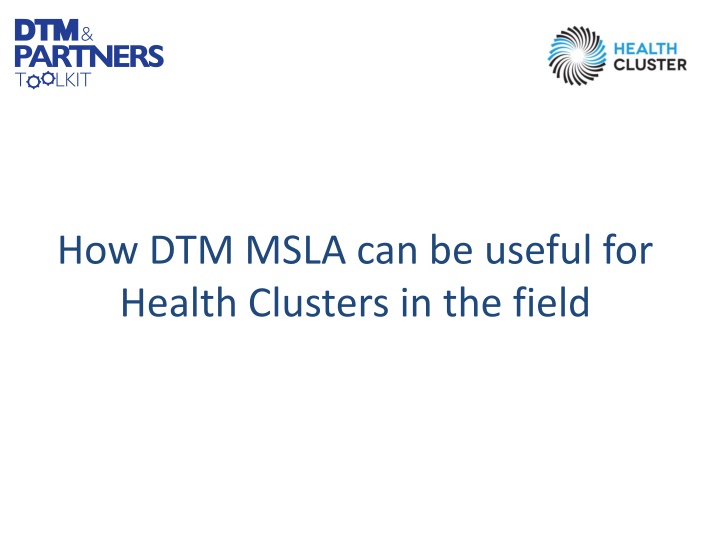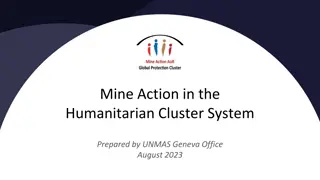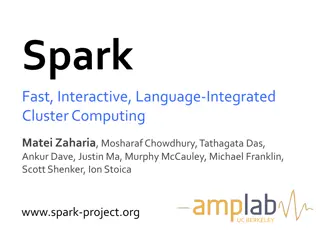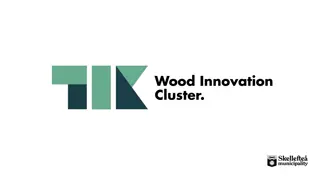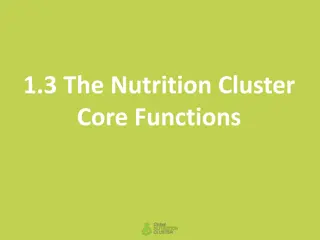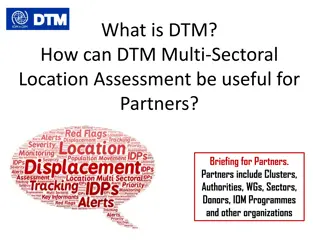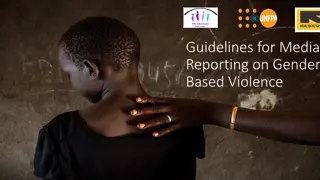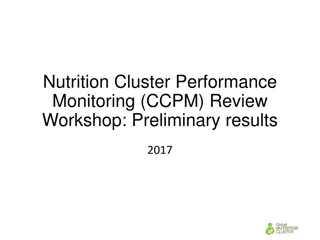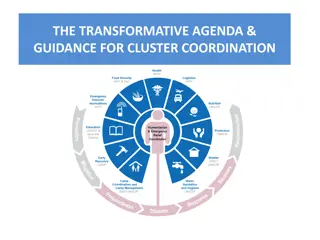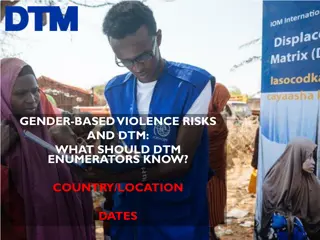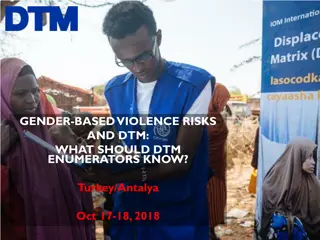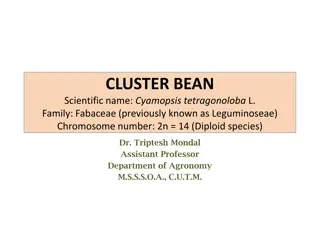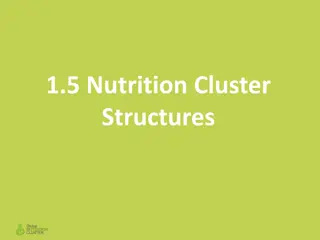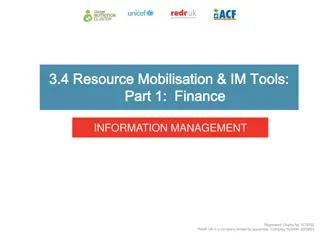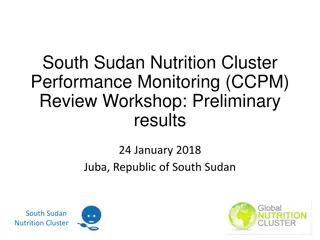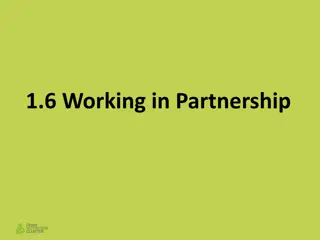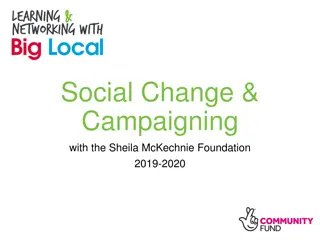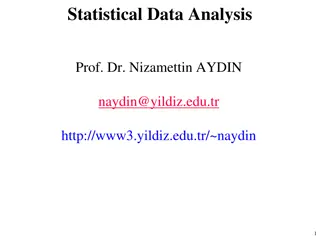Utilizing DTM MSLA for Enhanced Healthcare Cluster Management
DTM MSLA, a crucial tool in health cluster management, facilitates tracking of mobility and cross-sectoral needs, especially in emergency events and displacement situations. The DTM components, focusing on flow monitoring and registration surveys, enable effective data gathering and beneficiary targeting. The MSLA enhances location assessments through detailed observations by key informants and enumerators in IDP camps and sites. While DTM MSLA provides valuable insights, it is essential to understand its limitations in supporting health clusters effectively.
Download Presentation

Please find below an Image/Link to download the presentation.
The content on the website is provided AS IS for your information and personal use only. It may not be sold, licensed, or shared on other websites without obtaining consent from the author.If you encounter any issues during the download, it is possible that the publisher has removed the file from their server.
You are allowed to download the files provided on this website for personal or commercial use, subject to the condition that they are used lawfully. All files are the property of their respective owners.
The content on the website is provided AS IS for your information and personal use only. It may not be sold, licensed, or shared on other websites without obtaining consent from the author.
E N D
Presentation Transcript
How DTM MSLA can be useful for Health Clusters in the field
DTM OPERATIONS OVERVIEW Since its inception in Iraq in 2004, DTM has expanded its coverage to reach 120 countries. Past and present implementation contexts include conflicts, natural disasters and complex emergency settings, from small-scale & short-term to large-scale and protracted displacement & migration crises.
DTM Components FLOW MONITORING Tracks movement of flows at specific points MOBILITY TRACKING Tracks mobility and cross- sectoral needs in locations of interest (systematically) Groups and Location Sub-components: Baseline Area/Location Site/community Assessment (Stock population) Emergency Event Tracking (Sudden large movement of population) Sub-components: Baseline Assessment Flow Monitoring Registry REGISTRATION SURVEYs Gather specific information using sample from population of interest Registers individuals or households for beneficiary selection, vulnerability targeting and programming Households and Individuals Examples: Return Intention Community Perception Displacement Solutions Flow Monitoring Surveys Sub-components: Rapid Emergency Registrations Verification for Registration Biometric Registration
Not all DTM components are always rolled out in every country: DTM is implemented according to need, so different components may be rolled out in different countries. This presentation focuses on the DTM Multi Sectoral Location Assessment (MSLA)
Mobility Tracking- DTM Multi Sectoral Location Assessment (MSLA) When Initial displacement Protracted displacement Regular monitoring Groups and Location How? Non specialized Key informants Non specialized enumerators observation Sub-components: Baseline Area/Location MSLA (Site/community Assessment MSLA (Site/community Assessment - - Stock population) Stock population) Emergency Event Tracking (Sudden large movement of population) Where? IDP Camps/Sites/locations
What DTM Multi Sectoral Location Assessment (MSLA) cannot do for the Cluster DTM MSLA cannot replace a Health assessments or programme monitoring DTM MSLA is done through Key Informants and Observation DTM MSLA does not interview Health specialists DTM MSLA enumerators are not Health specialists DTM MSLA cannot ask questions on diseases and cause for morbidity and mortality, and cannot provide epidemiologically-valid statistics DTM MSLA is one of many data sources for the Cluster
So, why is DTM MSLA useful for the Cluster? DTM MSLA are regularly implemented (in rounds) and can monitor changes over time DTM MSLA collect inter-sectoral data, in addition to some sectors- specific data DTM MSLA have a very large territorial reach within the country DTM MSLA are implemented in a large number of crisis (very likely you will find a DTM exercise in your country of operation) Data are shared quickly after cleaning. Modalities of data sharing are flexible, including data for urgent action. Global Cluster and DTM have agreed on a list of recommended questions for MSLA DTM MSLA is flexible, and can be adjusted: it is focused on providing useful data for response
What DTM MSLA CAN do for the Cluster Provide estimates of population and groups at location level Monitor change over time in many locations Inform on access to services in many locations on an ongoing basis Raise red flags/alerts Provide information to help cluster prioritize their in-depth assessments
How can Cluster and DTM work on the field to obtain useful information for response
Approach: Profiles needed for Evidence- Based Decision-Making Evidence based decision making and response is generated by the interaction of four main skillsets. Excluding even only one of them undermines the veracity and usefulness of results. Subject Matter Expert: Interpretation: Making sense of analysis IM Expert: Data and analysis The modalities and process of their interaction must be rigorous and predictable, for results to be useful and usable Lack of sectoral understanding Lack of action Discounting Information Management (IM) skillset results in lack of evidence. Evidence-based decisions and response Discounting the subject matter or the cultural expertise prevents make sense of information (for a specific sector and in a specific culture/context). Lack of evidence Lack of cultural understanding Context /Cultural Expert Translation: What does it mean in this context? Decision-Maker (at Strategic, Programmatic and Operational level): Take action Excluding decision-makers results in lack of appropriate action. Modified by EDAUUR - Grand Bargain Work Stream for Needs Assessment
When is crucial that DTM and clusters engage? Design: Identification of what information your Cluster needs and can obtain from DTM Analysis- identify how and who: - does the descriptive analysis (charts, tables and maps) - makes sense of the data in that specific context (interprets) - provides recommendations for action
Design: how to engage? Identify the decisions to be made Cluster Coordinator (& members) Time-Saving Practice: show cluster coordinator & members a mock- up of the final charts & maps before finalizing the questions Available Info & Missing Info Cluster IMO (ask members) What is the best tool? Cluster IMO Do not start from the question: start from the decision Best question & answer options DTM and Cluster IMO
1. Alert 1.1 Unusual number of deaths (Human) 1.2 Unusual number of deaths (Animal)
2. Access to health 2.1 Distance to health facilities (in time) 2.2 Obstacles to accessing health 2.3 Availability and access to medicine 2.4. MHPSS support availability
3. Sexual Reproductive Maternal Health 3.1. Female healthcare workers presence 3.2 Women giving birth out of healthcare centre 3.3 Antenatal care/Post Natal Care [ANC/PNC]
4. Patients perspective 4.1 Health seeking behaviours 4.2 Presence of distress due to crisis
Analysis: Agreeing on Options for Analysis DTM and Clusters Early on, it is important to agree (between DTM and Clusters in the field) on who does what and the flow of the analysis process.
Balancing pressure for timely results and engagement with data users: Broadening Engagement a phased approach Time and human resources for engaging with all data users are often limited. Productive consultation is time consuming. Clusters, WGs, programmes and other potential users are numerous and data are needed ASAP. However, collecting useful data without engaging with data users greatly limits data and analysis use. A phased approach, broadening engagement, is a practical suggestion to manage such competing priorities. 1. Start by using questions, answers and analysis suggested in the data dictionary and standard analysis & dissemination plan, that were developed together by DTM , Global Clusters, AoRs and Sectoral Experts Prioritize responders based on a) largest impact; 2) evolving information needs Plan to reach all relevant stakeholders: Communicate the plan and articulate reasons for prioritization 2. 3.
Data Sharing: Jointly identify data-sharing modalities A visualizations of various data-sharing modalities helps Clusters and DTM teams identify the appropriate modality for each dataset What With whom & Why How When Shared with specific responders & for Immediate Action: Referrals Alerts Establish sharing mechanisms & tools (e.g., Service mapping, referral paths) and Data Sharing Agreements (LEG) During data collection / As data come in Specific datasets (might include personal data). E.g. protection cases, or number of UAC in a site & TIME After data cleaning, processing and analysis Global DTM website, HDX, ReliefWeb, Country website, mailing lists, hard copies at meetings ) Publically Shared All public data Shared with specific actors/groups for response, advocacy, analysis and more. E.g., Protection Cluster, GBV AoR Specific datasets (do not include personal data) E.g., Protection & GBV data not traceable to specific people Establish sharing mechanisms, tools, frequency and Data Sharing Agreements After data cleaning & processing
Data Sharing: Jointly identify data-sharing modalities Clusters and DTM teams identify the appropriate modality for each dataset
Decision-Making tree for Clusters on using DTM to collect data Decision Makers, IM and Sectoral Experts: Cluster Members, Cluster Coordinator and IMO Information Need: what do we need to know? Decision this info will help us take YES Is this Information already available? Use available Secondary Data IM Expert: Cluster IMO NO IM Experts and Sectoral Experts: Cluster Members / Coordinator & Cluster IMO What level of measurement and accuracy are sufficient to provide such information, in the context? Community level (Non Specialized Key informants/ Observation) Community level (Specialized Key informants /Observation) Clear information needed and its use (e.g., use mock-up chart to clarify details of information) Frequency (How often the information should be updated) Is info for public dissemination or restricted? Preconditions that should be in place before asking the question Type of suggested non specialized Key Informant How will the interpretation be done by the cluster? (e.g., in the first cluster meeting following the DTM round, with DTM coordinator/ and cluster IMO presence ) Facility level Cluster IMO Coordinator, & Cultural expert agree on this and IMO approaches DTM Cluster can approach DTM on Site Assessment with the following: Individual level (Surveys) Use other Systems IM Expert: Cluster IMO Cultural Expert, Sectoral and IM Experts: DTM coordinator, Cluster IMO & Cultural expert How and when should the information be shared (excel, website, email, encrypted ) Who (and when) does the descriptive analysis of this dataset? (e.g., DTM team, or Cluster IMO, or jointly ) Type of descriptive analysis needed Phrasing of questions and options for answers Data analysis and dissemination plan is jointly filled. Cluster agrees with DTM coordinator on the following:
Jointly identify information needs: From Use to Questions - walking backwards
How else can DTM and Health Clusters further engage for the benefit of displaced persons? Your opinion matters! At global level: At country level:
Where can partners find DTM data? Email lists in country On Humanitarian Data Exchange https://data.hum data.org/organization/internatio nal-organization-for-migration Bilateral sharing through Access Request Forms* (Confidential data) *https://displacement.iom.int/dtm-partners- toolkit/data-access-forms DTM website https://dtm.iom.int/
What do DTM data look like? Each ROW contains information about 1 location (e.g., a village, camp or site ) Each COLUMN contains 1 type of information about all locations Additional tab explains the data
What Administrative level? DTM MSLA data are available at LOCATION level You can aggregate them at district, province/governorate or country level (as in reports, for example) You can use them at Location Level to compare between locations or to design interventions for each location
Health partners will analyse using data from many sources
DTM for Health https://dtm.iom.int/dtm-partners- toolkit/sectors-and-themes
